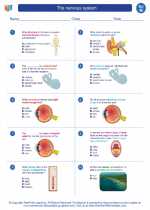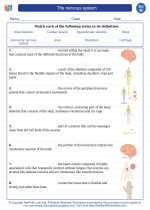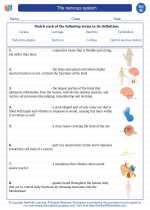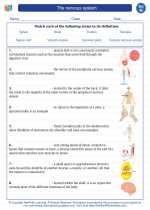Muscle Contraction
Muscle contraction is the process in which muscle fibers generate tension and shorten, resulting in movement. This process is controlled by the nervous system and involves a series of physiological events.
Key Concepts
- Sarcomere: The basic functional unit of a muscle fiber, composed of actin and myosin filaments.
- Sliding Filament Theory: The mechanism of muscle contraction involving the sliding of actin and myosin filaments past each other.
- Neuromuscular Junction: The point of contact between a motor neuron and a muscle fiber, where the signal for contraction is transmitted.
- Calcium Ion Release: The release of calcium ions from the sarcoplasmic reticulum, triggering muscle contraction.
- Energy Production: The process of ATP hydrolysis providing the energy for muscle contraction.
Mechanism of Muscle Contraction
The sliding filament theory explains how muscle contraction occurs at the molecular level. When a motor neuron signals a muscle fiber to contract, acetylcholine is released at the neuromuscular junction, leading to depolarization of the muscle cell membrane. This triggers the release of calcium ions from the sarcoplasmic reticulum into the cytoplasm of the muscle fiber. The calcium ions bind to troponin, causing a conformational change in the actin filament and exposing the myosin binding sites. Myosin heads then bind to actin, forming cross-bridges, and undergo a power stroke, pulling the actin filaments towards the center of the sarcomere. This process repeats, resulting in the shortening of the sarcomere and overall muscle contraction.
Regulation of Muscle Contraction
Muscle contraction is regulated by the nervous system and various signaling molecules. The strength and duration of a muscle contraction can be modulated through factors such as the frequency of neural stimulation, the number of motor units recruited, and the availability of calcium ions and ATP.
Study Tips
- Understand the structure and function of sarcomeres, actin, and myosin filaments.
- Memorize the steps of muscle contraction according to the sliding filament theory.
- Learn the role of calcium ions, ATP, and regulatory proteins in the process of muscle contraction.
- Practice drawing and labeling the molecular events of muscle contraction.
- Review the factors that regulate muscle contraction, including neural control and biochemical processes.
[Muscle Contraction] Related Worksheets and Study Guides:
.◂Science Worksheets and Study Guides Eighth Grade. The nervous system

 Worksheet/Answer key
Worksheet/Answer key
 Worksheet/Answer key
Worksheet/Answer key
 Worksheet/Answer key
Worksheet/Answer key
 Vocabulary/Answer key
Vocabulary/Answer key
 Vocabulary/Answer key
Vocabulary/Answer key
 Vocabulary/Answer key
Vocabulary/Answer key
 Vocabulary/Answer key
Vocabulary/Answer key
 Vocabulary/Answer key
Vocabulary/Answer key
 Vocabulary/Answer key
Vocabulary/Answer key
